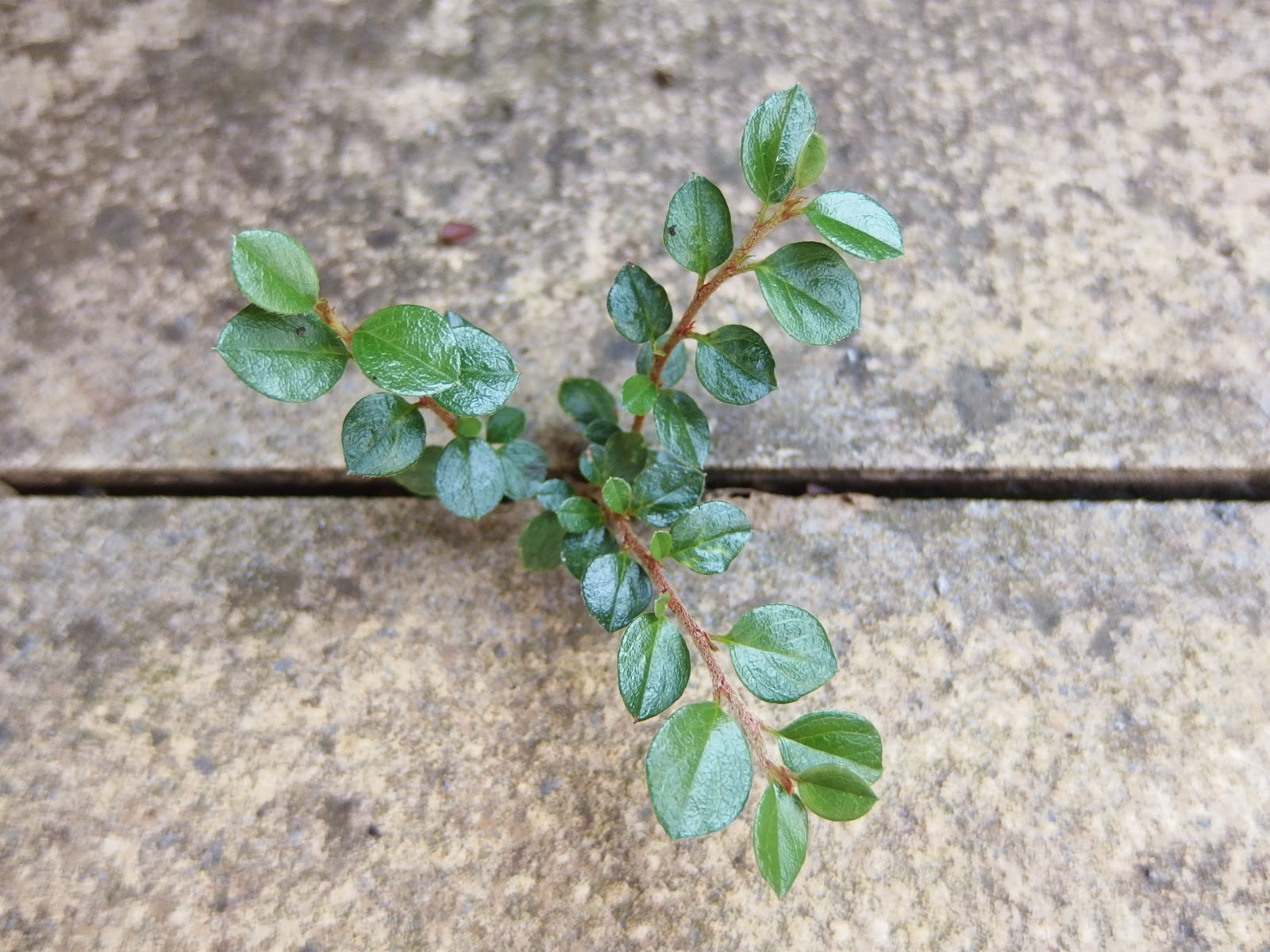Against the Odds: Cotoneaster horizontalis
We have several Cotoneaster horizontalis plants in the garden and just like the Unexpected Honeysuckle I wrote about for December's Blooms Day, I've never planted any of them.
Cotoneaster has had a bit of a bad press because it features in many a public planting scheme. It's tough as old boots and as you can see thrives almost anywhere. I suspect the pictured plant and the others at VP Gardens were brought to us by passing birds, possibly from the roundabout in the middle of the estate.
Another plausible explanation for the origin of the pictured plant is it's a seedling from the one which magically appeared in the large planter by the front door. Despite its proximity to our boots when we arrive home, it's definitely surviving against the odds.
I think the photo reminds us of its virtues. It has glossy green leaves and an attractive habit. In the spring it bears a profusion of creamy flowers which the local honeybees love, followed by bright red berries which the birds fight over in autumn. Its survival strategy is sound.
Whilst last week's Cotoneaster was a different species, the emergence of this week's example from the tiniest of cracks hints at how little space is needed for just three plants to thrive and grow to clothe a house.
Update:
Spade and Dagger has commented about this Cotoneaster being placed on the invasive species list along with the likes of Buddleja.
Here's what Plantlife's website has to say on the subject and this is the GB Non-Native Secretariat's ID sheet which confirms its listing under Schedule 9 of the Wildlife and Countryside Act 1981, England & Wales.
This means it's an offence to plant or cause the plant to grow in the wild, though it looks like it might be OK to plant it in your garden. How the law stands if it escapes from there is unclear - does this count as causing the plant to grow in the wild? It might be best not to plant it, to be on the safe side - my investigation of this issue continues...











Inspirational aren't they? When I see a plants thriving in such inhospitable places it makes me feel humble that I might complain about this or that! I see on your side bar that you are looking forward to seeing your first daffodils in bloom - come on across to Somerset some time soon we are awash with them here!!
ReplyDeleteIndeed Marigold Jam. For some reason my neighbours all have daffodils out, but mine are still tightly in bud :/
ReplyDeleteQuite incredible, and you're right, the glossy green leaves are lovely. CJ xx
ReplyDeleteThanks CJ, have a great weekend :-)
DeleteThe will to survive is stromg.
ReplyDeleteIt is :)
DeleteWe too have them popping up all over the garden, thanks to the birds eating the berries.Some are left in, some potted up and given away, others find their way to the compost heap!
ReplyDeleteIt's a similar story here too Pauline, though I was a bit too indulgent with one specimen and it threatened to take over on of my central beds. There's about 10 plants in that same spot now!
DeleteHasn't Cotoneaster been declared an invasive alien species along with Buddleia, and even been blamed for taking bees away from native species. I suppose you can see why, but both are really useful plants for those difficult to grow areas and in highly urban areas they are often the only source of flowers for bees.
ReplyDeleteGood point - I've updated the blog post.
DeleteEeep! - we have a large Cotoneaster tree in new garden, which means hundreds of little Cotoneaster babies. I love the tree but do hope the babies aren't too difficult to dig out if they're that invasive.
Delete